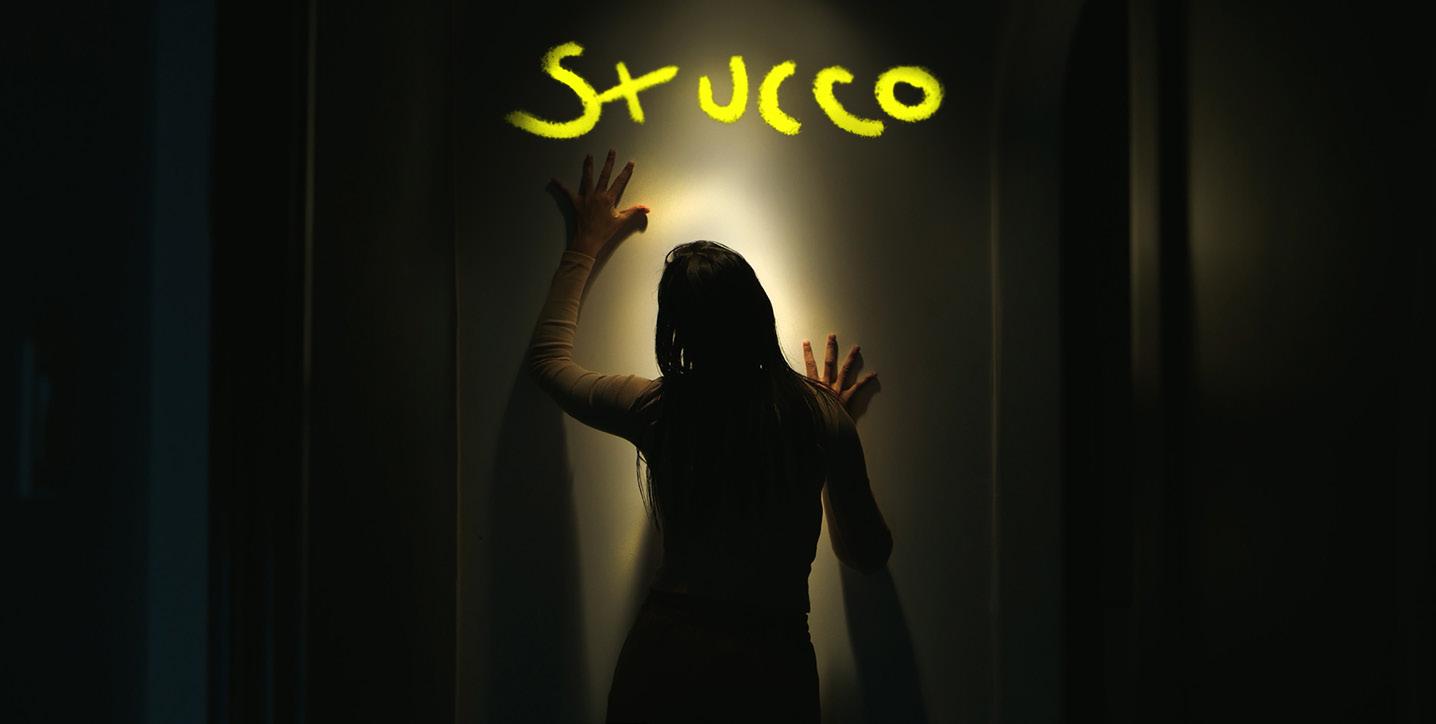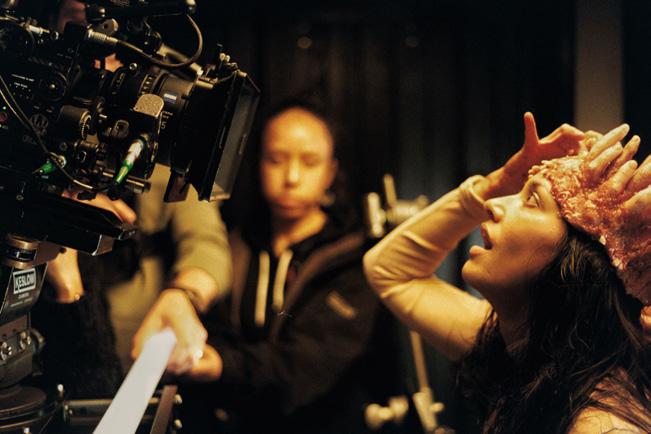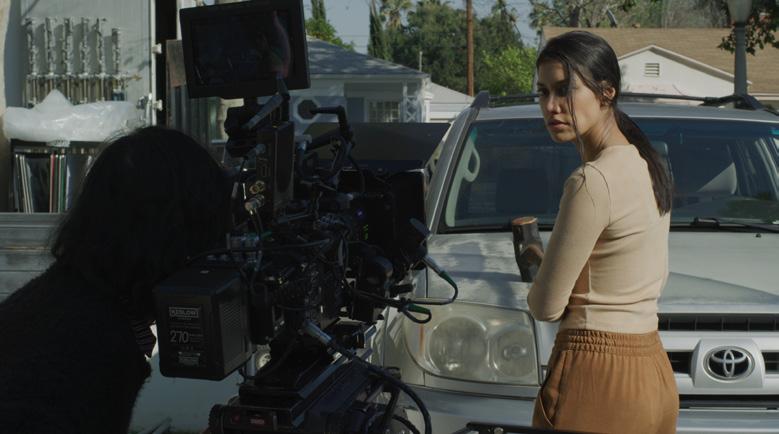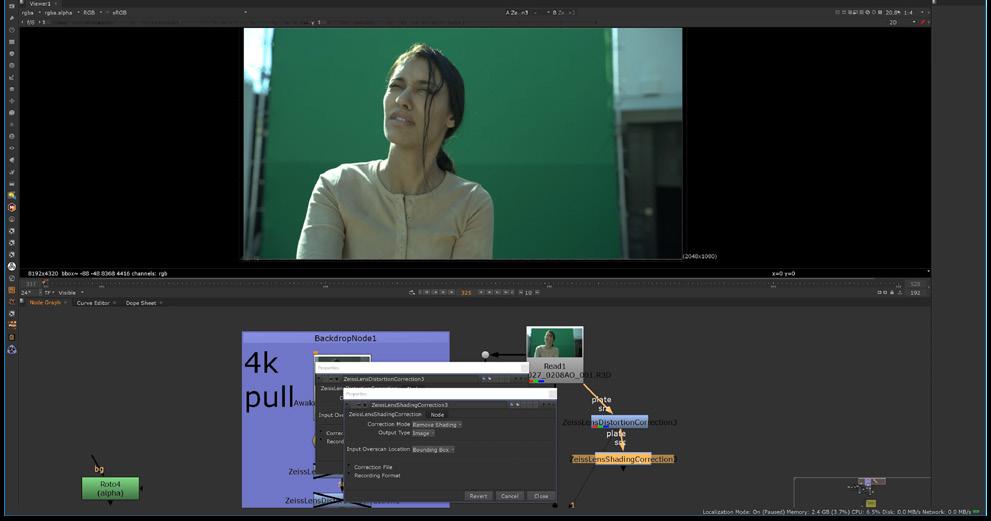
3 minute read
ZEISS Lens Metadata Technology Empowers DPs to Focus on Their Art
ZEISS CINE LENSES ZEISS LENS METADATA TECHNOLOGY EMPOWERS DPs TO FOCUS ON THEIR ART

Advertisement
ZEISS Cine Lenses recently teamed up with filmmakers Janina Gavankar (Actor, Co-Director), Russo Schelling (Co-Director), and Cinematographer Quyen Tran to create "Stucco." Quyen, who was recently named one of “Variety’s 10 Cinematographers to Watch,” lensed this horror short film, which is reminiscent of slow burn thrillers from the seventies, but uses innovative technology to transport the story to modern day. Producing partners RED Digital Cinema and EFILM round out the team of industry leading creators for this exciting new short.

Photo by Gustavo Austidillo

Photo by Gustavo Austidillo Photo by Cleigh Reed
SETTING THE LOOK
The production team used a RED DSMC2 Monstro outfitted with ZEISS Supreme Prime lenses. After seeing the lookbook, Quyen Tran was certain that shooting in large format would lend itself to the ominous narrative. In Stucco, Janina Gavankar’s character battles with agoraphobia, so for Quyen “it was important to show the relationship of the protagonist to the house that is trying to engulf her.” Using wider lenses for select close-ups of Janina and the framing possibilities of a larger format allows viewers to really experience the tension of her supernatural surroundings.
Leveraging ZEISS eXtended Data (XD) technology on-set enabled Quyen with more time and creative freedom for lighting and collaboration with the actors and directing team. “With the RED Monstro and the data from the Supreme Primes, we were able to get all the lens data onto the negative, which was really exciting,” said Quyen, “Which means that on set, we have more time to light and to focus on other things.” Based on Cooke’s /i technology which records key lens data such as focus length, T-stop, and depth-of-field, XD technology provides two additional columns of frame-accurate information: shading and distortion, an ideal tool for VFX intensive workflows.
A SEAMLESS PIPELINE
RED’s latest firmware update allows camera encoding of the lens metadata directly into the video footage, eliminating the need for an external box. Quyen’s DIT, Michael Romano, used Pomfort Silverstack on-set to extract ZEISS eXtended Data out of the R3D files then generated a ZEISS Lens Correction File (.ZLCF), a text file containing all lens data for every frame needed for VFX.
Using ZEISS’ injection software, the video footage and .ZLCF were inserted into an open EXR file sequence for VFX Artists Gene Warren III and Caleb Knueven to begin their work on the short film. The lens metadata for shading and distortion was able to ride along in the EXR file. “It’s actually on a frame by frame basis,” said Imaging Scientist Joachim Zell, speaking of the freeware, open source eXtended Data plug in from ZEISS. “It was the first time we used this lens metadata tool from ZEISS. We just plugged it into our process line, it just happened automatically in the background. Basically, the robot did it for us.”

MAXIMIZE YOUR POST SPEND
“Having this lens data is pretty phenomenal,” says Caleb, “We get everything from the lens.”
ZEISS’ robust plugin for Nuke allowed the artists to reapply lens vignetting and shading characteristics on any node with guaranteed accuracy, and to the foreground or greenscreen background separately – saving time and money. “Many times I’ve spent many hours trying to undistort lots of shots. It can be time consuming and you’re never really sure that it’s actually working until you finish the project,” said Gene, “so it was nice to have these plugins that just made it easy.”
Joachim Zell, who is credited as the film’s Imaging Scientist played an integral part in developing a custom cutting-edge workflow using the ZEISS XD technology. “I don’t want to necessarily make money in post production by creating lens grids by hand, it doesn’t have to be like that. We want to work on the creativity and want to help a movie look more beautiful rather than working on the technical basics.”
Experience the ease of using ZEISS eXtended Data plug ins and metadata capability on your next shoot. Contact the team at the ZEISS Cine Lens Demo Center (cineshowroomla@zeiss.com) and schedule your workflow demo to meet the needs of your upcoming project. n



